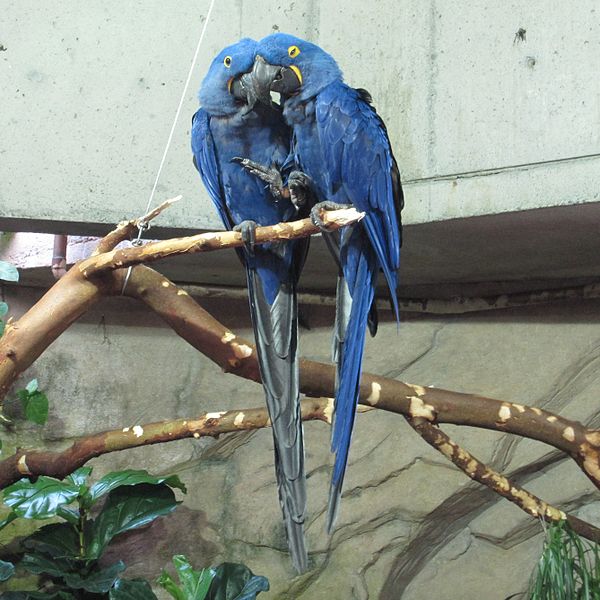Feather clipping is a bit more complicated than, well…merely clipping feathers! Timing, technique and other factors must be taken in to consideration if the procedure is to be successful.
First Step
 You would be well advised to observe a veterinarian or experienced parrot keeper clip your bird’s feathers before attempting to do so yourself. Being able to anticipate your pet’s reaction to the procedure is as important as learning how to carry it out.
You would be well advised to observe a veterinarian or experienced parrot keeper clip your bird’s feathers before attempting to do so yourself. Being able to anticipate your pet’s reaction to the procedure is as important as learning how to carry it out.
Timing: Age and Season
Birds should not be clipped until they have learned how to fly…clipping too early may hamper the development of the powerful flight muscles. Also, if a parrot does not learn basic flight skills when young, it will likely be injured later on should its flight feathers grow in.
Ideally, feathers should be trimmed just after the molt, which occurs yearly in most parrots. Feathers that are still growing, recognizable by blood visible within the shaft, are known as blood feathers. These will bleed, sometimes profusely, if cut, and often must be pulled (please see article below) in order to avoid an emergency situation. Always keep a bird first aid kit on hand, and clip your bird at a time when a veterinarian is readily available.
Clipping Primer
The feathers to be clipped in order to limit flying ability are known as the primaries, or primary flight feathers. These are the 10 longest feathers on the outer edge of the parrot’s wing. Clipping should begin at primary #1, which is the shortest feather and that furthest from the bird’s head. How many primaries need be cut depends upon the species and the individual. Begin by clipping 5 primaries.
The primaries should be trimmed until the cut ends are hidden beneath the next row of small feathers. These feathers, known as the major coverlets, will shield the rough ends of the primaries, preventing them from irritating the skin. If the primaries protrude from beneath the major coverlets, the parrot may pluck them.
A clipped bird should be able to get some lift and fly for a few feet. If unable to do so, the parrot will be injured if it tries to fly from a high point, or if it leaps from a perch when startled. Both wings should be trimmed…trimming one unbalances the bird, often causing stress and physical injuries.
Clipping Pros and Cons
Most parrot owners decide to clip their pets’ wings as a training aid – clipped birds tend to stay in one place during training. There are, however, other situations where clipping might be recommended. The decision will depend upon the nature of each bird and its captive environment.
For example, clipped birds cannot crash into mirrors or alight on hot stoves, and they are less likely to chew furniture or fly out open windows. Birds of all kinds quickly sense outside air and locate escape routes. I have seen this a great many times in zoo collections (where windows are always screened in bird holding areas).
If multiple parrots are housed together, feather clipping an aggressive individual will limit its ability to harass others. This is particularly useful when new birds are introduced…by the time the aggressor’s feathers grow in, the birds may well have learned to co-exist.
Feather trimming may limit a male’s ability to mount and copulate with a female, especially in aviary situations.
Further Reading
You can learn more about dealing with cut and broken blood feathers at
http://qp-society.com/qpserc/bloodfeathers.html.
Image referenced from Wikipedia and originally posted by snowmanradio.
 That Bird Blog – Bird Care and History for Pet Birds
That Bird Blog – Bird Care and History for Pet Birds
